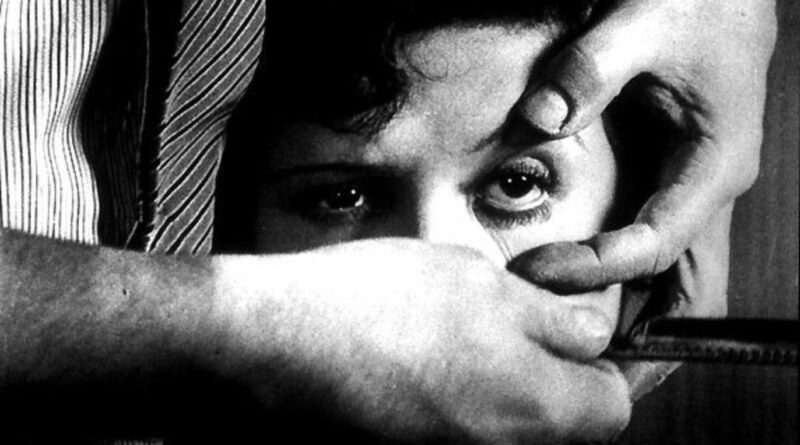Un chien Andalou (1929)
On the one hand, it’s futile to write a review for Un chien Andalou, the directorial debut of film critic and former assistant director Luis Buñuel. This is not a film that attempts to weave a narrative – at least, not in the traditional sense of the word. So far as I could tell, it doesn’t even have thematic or symbolic significance. It’s exactly as it appears to be: A bizarre series of images that have no clear or logical connection to one another. Maybe it’s the cinematic equivalent of stream of consciousness writing. Or maybe it’s like a dream, in which the mind follows patterns of its own making, usually compiled from life events, people, places, and fantasies. Whatever it is, Buñuel and co-writer Salvadore Dali obviously did not have a conventional film in mind.
On the other hand, the fact that it’s a film, period, makes it worthy of discussion. A film, at its most fundamental level, is a series of moving images; it doesn’t necessarily have to be about anything or make any narrative sense. It may even be worthy of debate – not about the plot (there isn’t one), but about the audacity of publicly releasing a movie cobbled out of individual moments that don’t make any sense even unto themselves. I think we can all agree that most filmmakers don’t think this far out of the box, that their collective intention is to tell traditional stories in traditional ways. I suppose the best way to think of Un chien Andalou – which translates as An Andalousan Dog, an animal the film doesn’t feature – is as a factual record of nothing more than its own existence.
Although it’s obvious that conventionality was the first thing Buñuel and Dali threw out the window, it seems they did have a few goals in mind: (1) To push the limits of what a movie can be, regardless of the many subjective definitions of the word “art”; (2) to intentionally shock and disturb those who see it, as if to spit in the face of the prigs that enforce their senses of decency and taste. There are images in this film that some will find deeply offensive, as when a man (Pierre Batcheff) gropes both the clothed and unclothed breasts and buttocks of a young woman. There’s also an unsettling shot of another man (Buñuel) using his razor to slice the same young woman’s eyeball. It’s not as if she puts up a fight; she sits in a chair stoically, and when it happens, there isn’t a single twitch of a muscle or a scream of pain.
There are other equally unsettling moments, as when Batcheff looks at his hand and sees ants crawling out of a hole in the skin, or when he ropes into a moderately-sized apartment two grand pianos, both containing the dead, decaying carcasses of donkeys. Also attached to the rope are two priests, who aren’t unfazed by this experience so much as completely unaware of it, and what appear to be two stone tablets. Given the inclusion of the priests, I can only assume the tablets represent the Ten Commandments. But in making that assumption, I’m attempting to form a connection between images. Connections were never the goal with this movie. At that moment, I slipped up and forgot that the filmmakers had no narrative or symbolic agenda.
This means, of course, that there’s no way to explain an early scene in which Batcheff bicycles down the street with a box strapped around his neck while wearing a nun’s habit over his regular man’s suit. The same goes for a scene of an androgynous woman in a suit poking at a severed hand with a cane, while at the same time surrounded by a crowd of spectators the police are trying to keep control of. She will eventually put the hand in the same strapped box the habit-wearing man once had, then get run over by a passing car. And how is it possible to go from “once upon a time” to “eight years later” to “three in the afternoon” to “sixteen years earlier” when (1) the featured characters all look the same age, and (2) it contradicts what other scenes had established?
I realize I’m giving away much of what the film shows us. But in this case, that’s okay; the total absence of a logical plotline, a discernible theme, and character development renders any detailed scene description null and void. Quite simply, the scenes in and of themselves mean nothing at all. The real point of this movie, as I see it, is to give audiences something new, something that intentionally redefines commonly held notions about storytelling and challenges one’s sense of morality – at least, when it comes to personal views on art, specifically how it befits mass consumption and the very definition of the word itself. However audiences respond to Un chien Andalou, it will forever be a fact in the annals of filmmaking.

